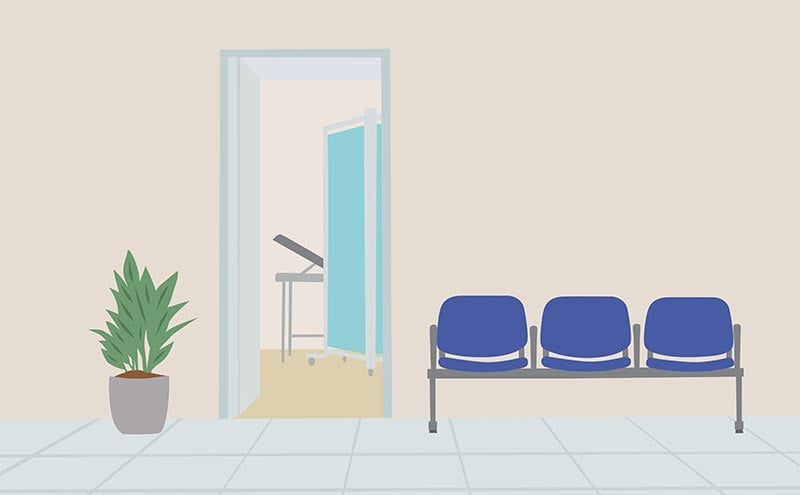
Observation Units: An Intersection of Outpatient and Inpatient Quality
Dedicated, protocol-driven emergency department observation units are defined by value and have been proven to deliver high-quality, cost-effective care. Additionally, observation services delivered via a dedicated unit are a unique driver of patient satisfaction. The leadership team of New York University Langone Medical Center’s 35-bed, dedicated emergency department observation unit previously reported experiences with implementation of venous thromboembolism prophylaxis, goals of end of life care and reporting of code status, and fall prevention measures. We recently embarked on four new quality improvement projects related to medication reconciliation, antimicrobial stewardship, safe sleep, and management of heart failure.
Medication Reconciliation
Accurate medication reconciliation is necessary and essential to patient safety. We recognize the importance of timely and accurate medication reconciliation while caring for medically-complex, elderly patients in a setting focused on rapid throughput. To streamline the medication reconciliation process, we created a multidisciplinary team of providers, nurses, clinical pharmacists, and administrators to revise the medication reconciliation workflow to optimize the process.
A clinical pharmacist was integrated into the clinical team to perform real-time arrival medication reconciliations and non-formulary conversions. Additionally, the clinical pharmacist reviewed antimicrobials, considering historical culture and sensitivity data, the institutional antibiogram, local resistance data, and available evidence. When home medications were in doubt, the clinical pharmacist went to the bedside to clarify the home medications and then called the patient’s primary care provider or pharmacy. Overnight, when the arrival medication reconciliations were completed, the clinical pharmacist prepared the patients for disposition and initiated the discharge medication reconciliation and home medication conversions. In this manner, the clinical team focused on advancing the clinical pathway, while the pharmacist enhanced the medication safety in the unit.
Safe Sleep
Many patients in the observation unit, including a significant cohort of geriatric patients, are medically complex. The importance of sleep in healing is well established, and the increased stimulation that occurs while patients are in the hospital is also well known. A multidisciplinary initiative was developed to maximize safe sleep and proper sleep hygiene, while minimizing the use of high risk sleep medications (ie, sedative hypnotics) to reduce fall risk and other adverse medication effects. Education for both providers and nurses focused on avoiding Beers criteria medications and particularly sedative-hypnotics. Nurses, providers and pharmacists partnered with patients (when sleep medications were requested) to identify safer alternatives to promote sleep during hospitalizations.
Pharmacy audits were then performed to monitor prescribing rates of benzodiazepines and particularly zolpidem. Feedback was provided to staff to highlight “near misses”, as well as “great saves.” Once zolpidem use decreased to near zero, data was queried to ensure that a corresponding increase in benzodiazepines or diphenhydramine had not occurred. The use of benzodiazepines, diphenhydramine, and zolpidem all decreased in the evening hours, with a coincident increase in melatonin prescribing. This occurred without any apparent effect on patient satisfaction (zero patient complaints after discussion) and with shared decision making between the clinical teams and patients. All patients eventually fell asleep.
Antimicrobial Stewardship and the Cellulitis Protocol
The development of antimicrobial resistance is a broad concern. We noticed a higher than expected volume of vancomycin utilization for patients placed in the observation unit for treatment of cellulitis. A multidisciplinary team was formed with the institution’s antibiotic stewardship program and infectious disease teams to create a teachable algorithm to guide antibiotic selection. The goal was to educate providers regarding the importance of antibiotic stewardship and to ensure that appropriate antibiotics were prescribed to optimize patient safety and patient outcome. Secondarily, we observed the impact on length of stay, conversion, and bounce-back rates.
The interdisciplinary team reviewed local antibiograms, infectious disease literature, and national guidelines around antibiotic stewardship. A treatment algorithm was developed and communicated through email, pamphlet posting, and on-site teaching. Weekly feedback was based on pre- and post-intervention chart audits, which evaluated provider prescribing, length of stay, conversion rate and bounce-back rate. 46% of the pre-intervention encounters showed appropriate antibiotics chosen, as opposed to 79% following the initial algorithm launch. Pre-intervention average length of stay was 27 hours, whereas post-intervention was 33 hours. Pre-intervention 30-day bounce-back rate was 17%, and post-intervention was 13%. Pre-intervention inpatient conversion rate was 15%, while post-intervention inpatient conversion rate was 14%. This project is ongoing, as the quality improvement team continues to educate and encourage the use of their algorithm; however, early metrics appear to be trending favorably.
Congestive Heart Failure (CHF)
Innovations in health care and health policy have centered around keeping patients safe in the community and preventing avoidable hospital admissions and readmissions. In the emergency department observation unit at New York University Langone Health, a quality improvement endeavor was started with the goals of positively impacting disease management, patient length of stay, and 30-day readmission rate. A standardized, multidisciplinary protocol was developed that detailed management for congestive heart failure (CHF) patients in acute exacerbation, which included protocol integration into the electronic medical record. Providers were educated on appropriate diuretic administration, defined as furosemide 1mg/kg IV or double the patient’s home dose, whichever was greater. Nursing staff recorded urine output and worked with providers to interpret output within the first four hours following furosemide administration. Labs were followed at close intervals, and follow-up was scheduled prior to discharge. Overall, there has been a 25% increase in compliance with the acute decompensated heart failure protocol, 46% increase in appropriate initial furosemide dosing, and 60% increase in appropriate follow up appointments made. The average length of stay was not significantly impacted.
The above described introduction of several quality improvement projects was aimed at aligning the emergency department observation unit with larger quality efforts, which we expect to expand on in the future.
Barie Salmon, MD,
Tracy Salmon, MD,
Lauren Magee, PA-C,
Melanie Raffoul, MD, and
Christopher Caspers, MD


